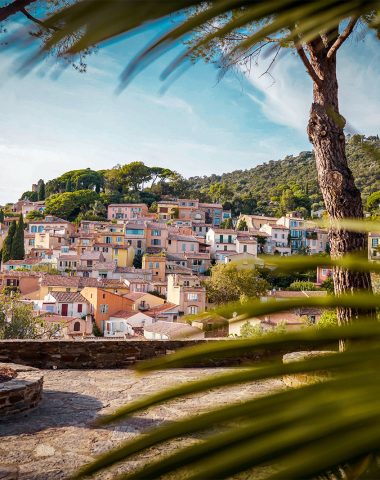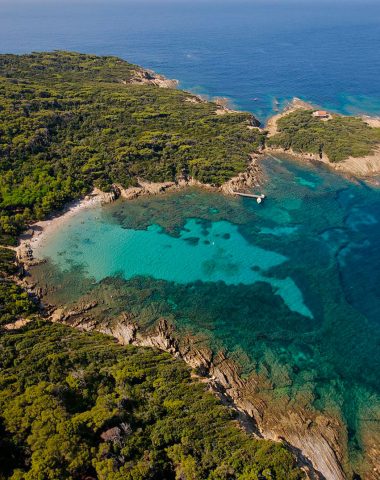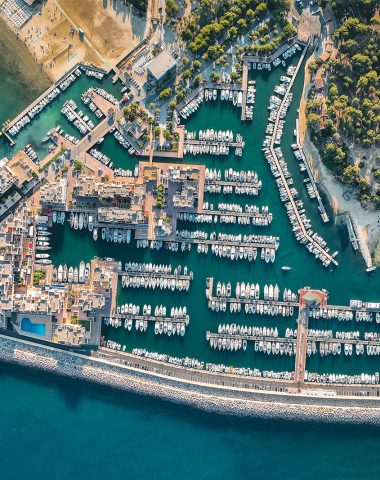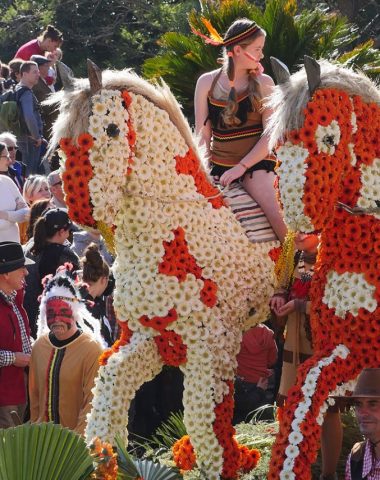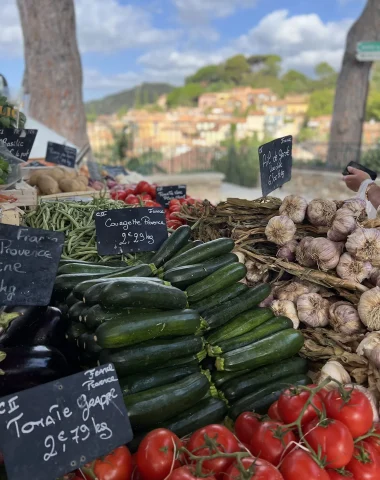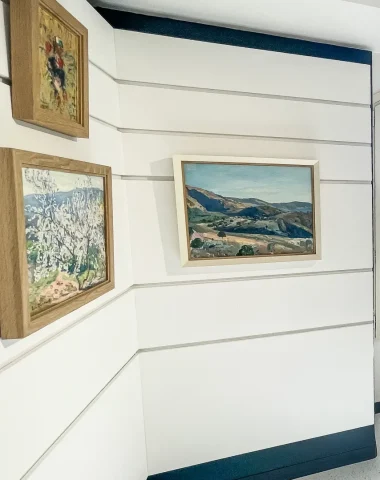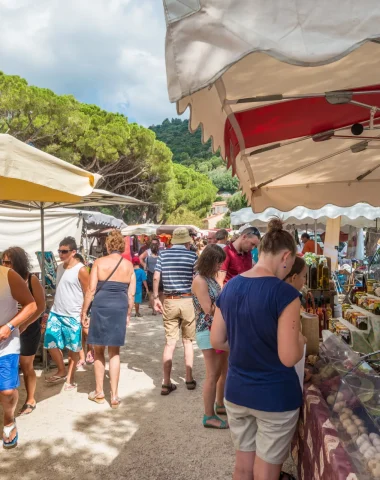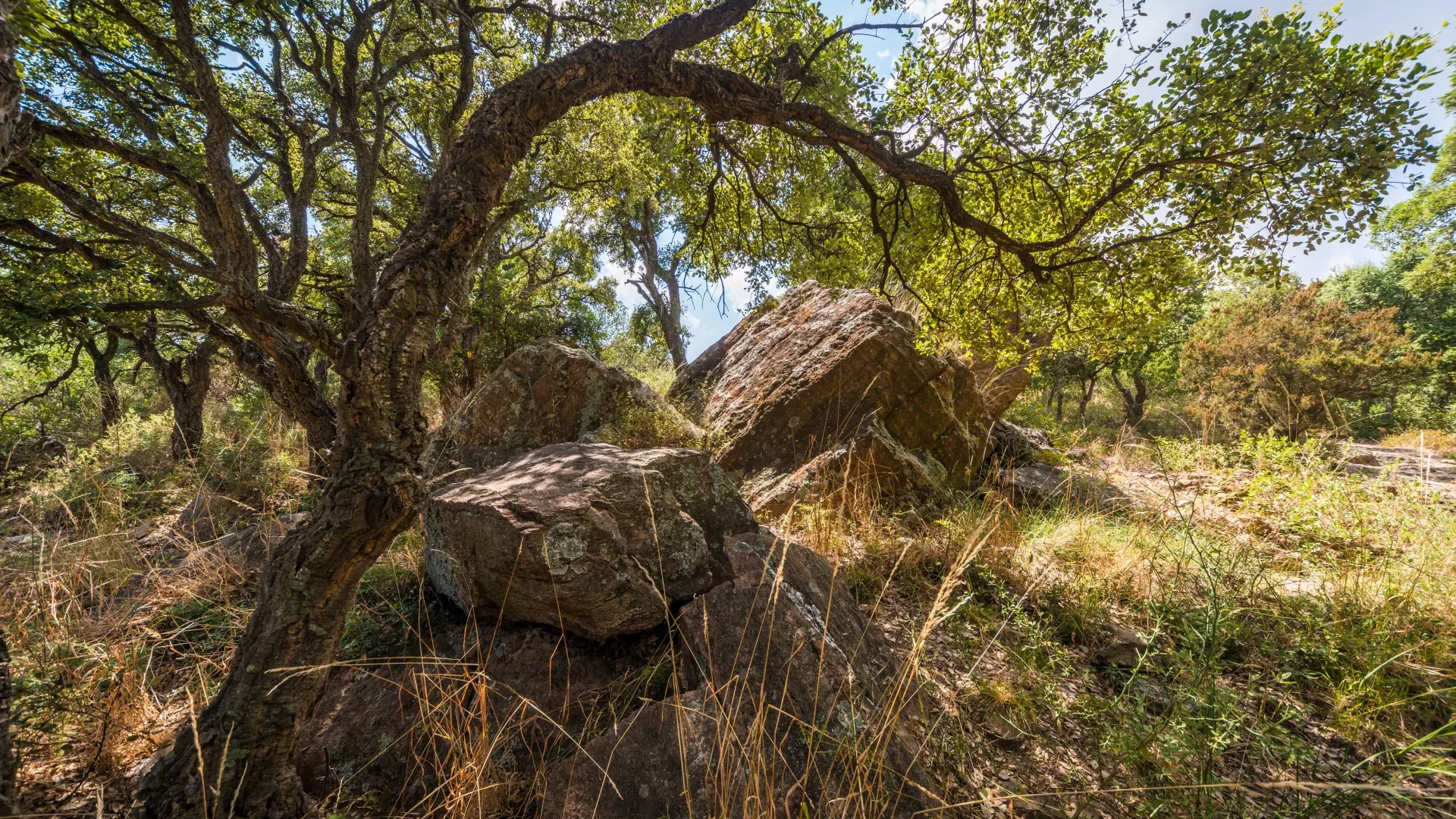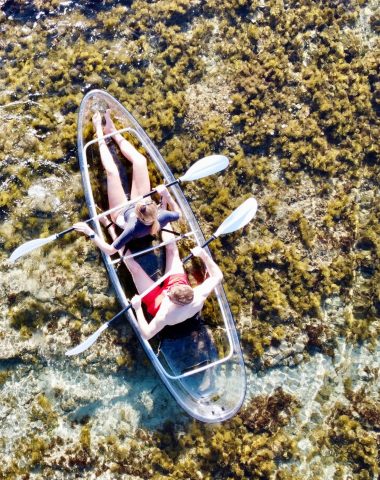Are you someone who loves to be surrounded by nature and go on exhilarating hikes? If so, the Massif des Maures is the perfect destination for you! This mountain range, which reaches an altitude of 776m, is brimming with dense forests, picturesque trails, and awe-inspiring viewpoints that will leave you breathless. If you prefer to take leisurely walks by the sea, the Massif des Maures has got you covered as well! With its proximity to the Var coast and the charming islands of Hyères, you can enjoy the best of both worlds. This Var territory spans over 60 km from Hyères to Fréjus, passing through 26 towns and villages, including the lovely Bormes les Mimosas. Not only is it a place of preservation for the wild and endemic nature of the Var, but it is also a vast playground for exploration and adventure in any season!
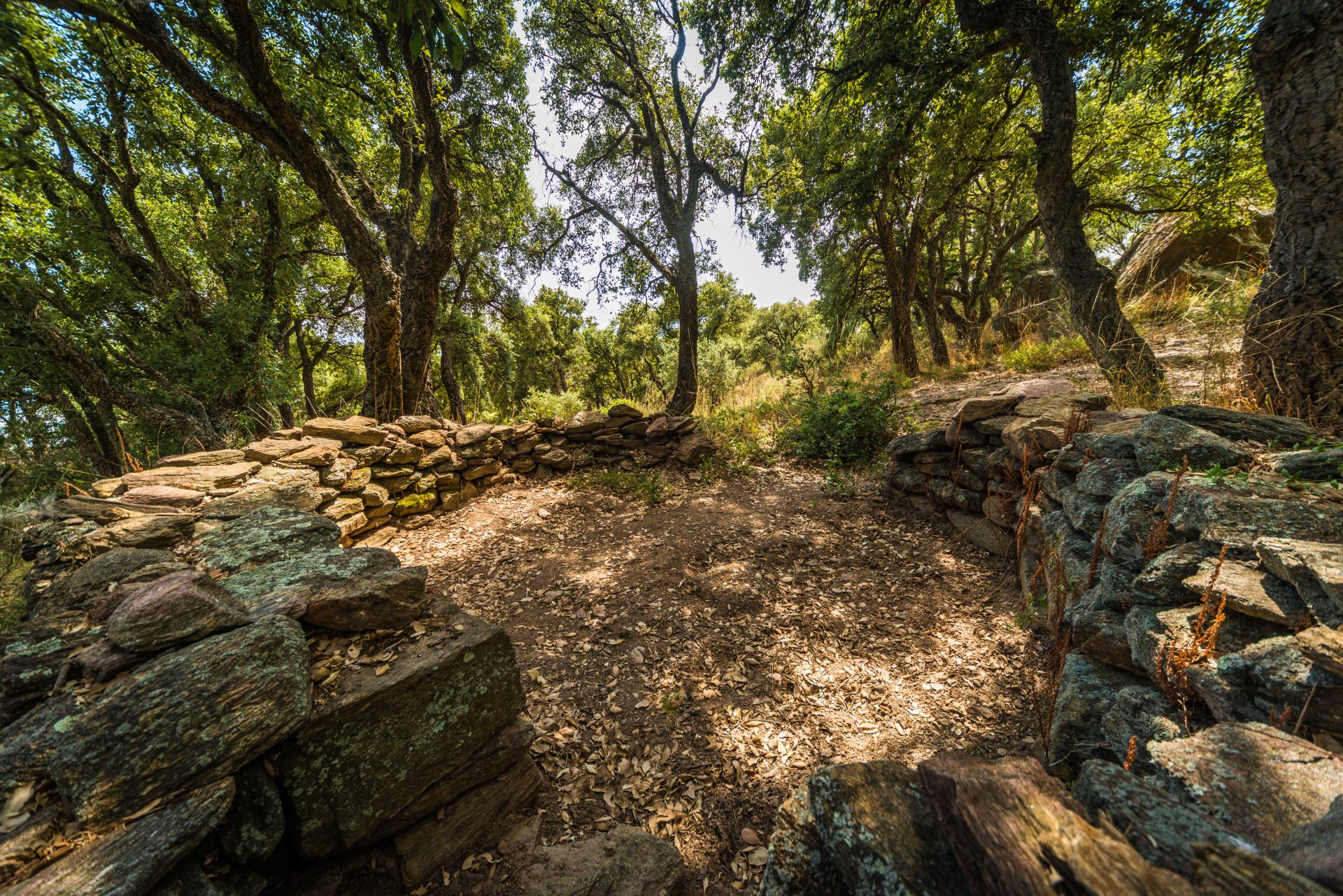
A natural heritage to respect and preserve
This vast expanse between the sea and the forest offers an abundance of diverse habitats that support a wide variety of species. The Massif is adorned with stunning trees such as the majestic holm or cork oaks, towering pines, and majestic chestnut trees. For nature enthusiasts and outdoor enthusiasts alike, the Massif is a treasure trove of breathtaking scenery, panoramic vistas, and hidden corners to explore. The diverse range of environments, including coastal, rocky, and forested areas, creates a rich tapestry of biodiversity that is unparalleled in its splendor. In the autumn, you can marvel at the vast array of mushrooms and bask in the enchanting scent of the humid maquis. During summer, the melodious sound of cicadas and the invigorating aroma of hot pines will leave you feeling euphoric!
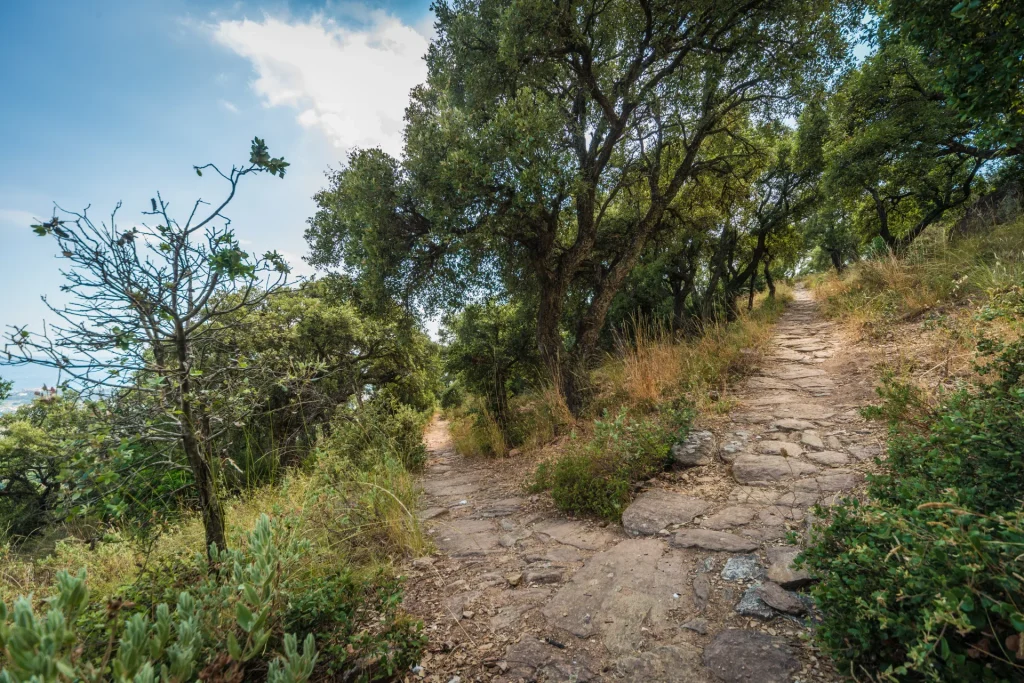
The Maures Massif is fortunate to have protected areas, including the National Nature Reserve of the Maures Plain, the National Park of Port Cros, and the Conservatoire du Littoral.
While exploring the numerous hiking trails that weave through the Massif, you may have the opportunity to catch a glimpse of some of its inhabitants, such as the graceful roe deer, the rugged wild boar, or the delicate Hermann’s tortoise. In Bormes, the scenic trails provide an excellent opportunity to immerse oneself in the natural beauty of the area while observing its diverse wildlife.
The conservation efforts and protected areas in the Massif ensure that visitors can enjoy the beauty and splendor of the natural environment while preserving its biodiversity for generations to come. The rich diversity of fauna and flora in the Massif des Maures is a true treasure, and in Bormes, we recognize the importance of protecting it. Year-round, firefighters and ONF agents tirelessly monitor the Massif by land and air, doing everything possible to ensure that the rules are respected for the benefit of all. When the risk of fire is at its highest, the prefecture of Var implements a protocol to prevent potential disasters. From July 15th to September 15th, a map of the Massif is updated daily, informing visitors of the fire risk status. In August, it is not uncommon for access to the Massif to be restricted for safety reasons. These measures help to ensure that the natural beauty and ecological integrity of the Massif are preserved for all to enjoy. We all have a role to play in protecting this precious resource, and by working together, we can safeguard it for future generations.

A wide range of activities
As one of the oldest massifs in France geologically, the Maures massif boasts a fascinating topography that invites exploration! Whether you’re an avid hiker, a lover of steep slopes, or simply looking for a leisurely walk by the sea, Bormes has a plethora of trails that cater to your desires. The vistas are awe-inspiring, and the colors change with the seasons. In winter, the sunsets at 5 pm paint the horizon and the sky with hues of orange, pink, and red, resembling the brushstrokes of a master artist. And who can miss the vibrant yellow of the mimosa? In spring, the bright green of the hills contrasts beautifully with the nuanced blues of the sea.
Get ready to be amazed by the stunning views awaiting you on the walk up to Notre Dame de Constance! From the top, you’ll have a panoramic view of Bormes les Mimosas and its beautiful surroundings. But that’s not all – the coastal path starting from La Favière or Cabasson also offers spectacular views and is definitely worth exploring. If you’re interested in learning more about the Maures massif and its accessibility, why not join one of our guided tours of the coastal path? Our knowledgeable guides will share interesting facts and stories about the area as you soak up the breathtaking scenery.
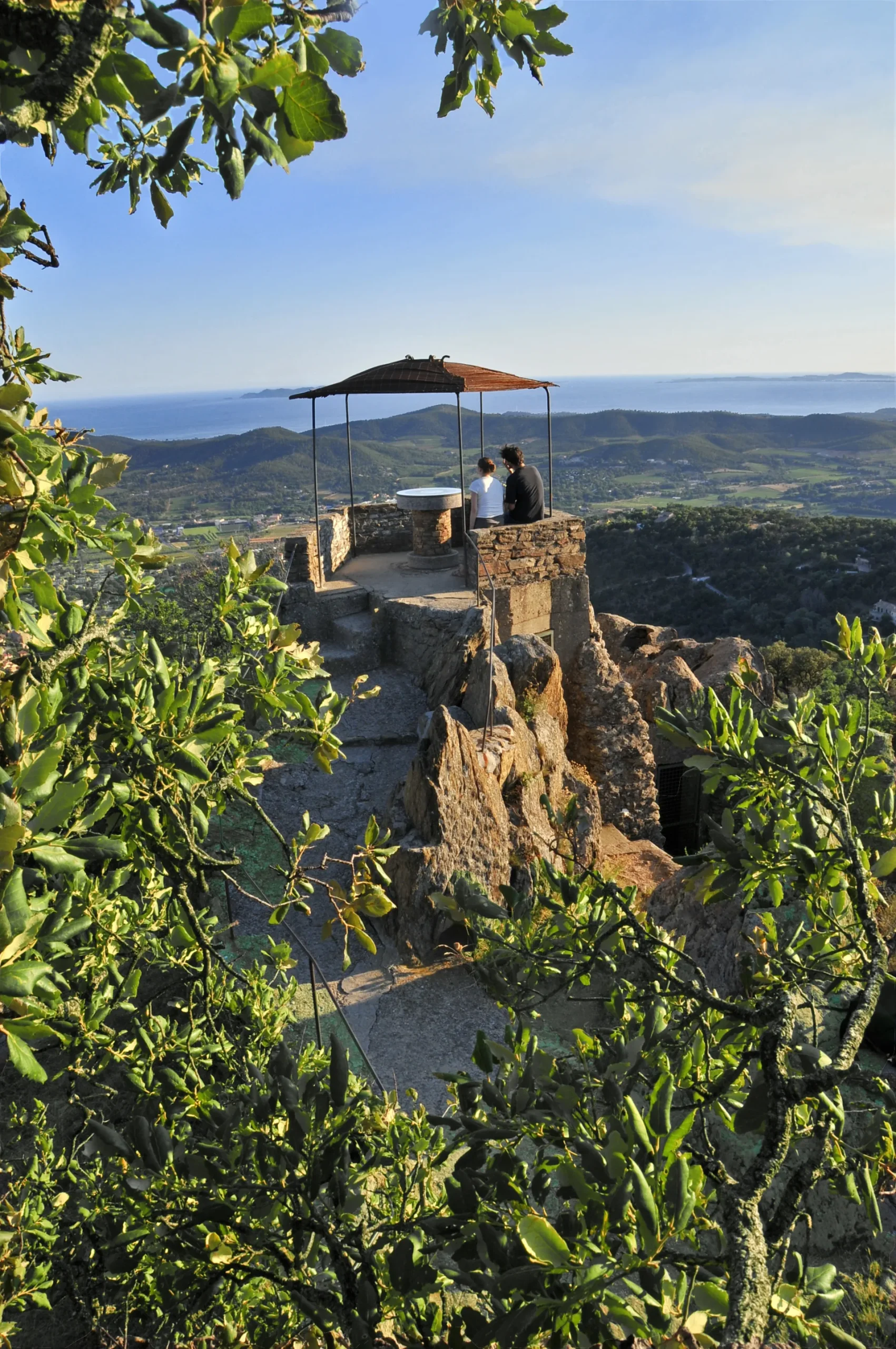
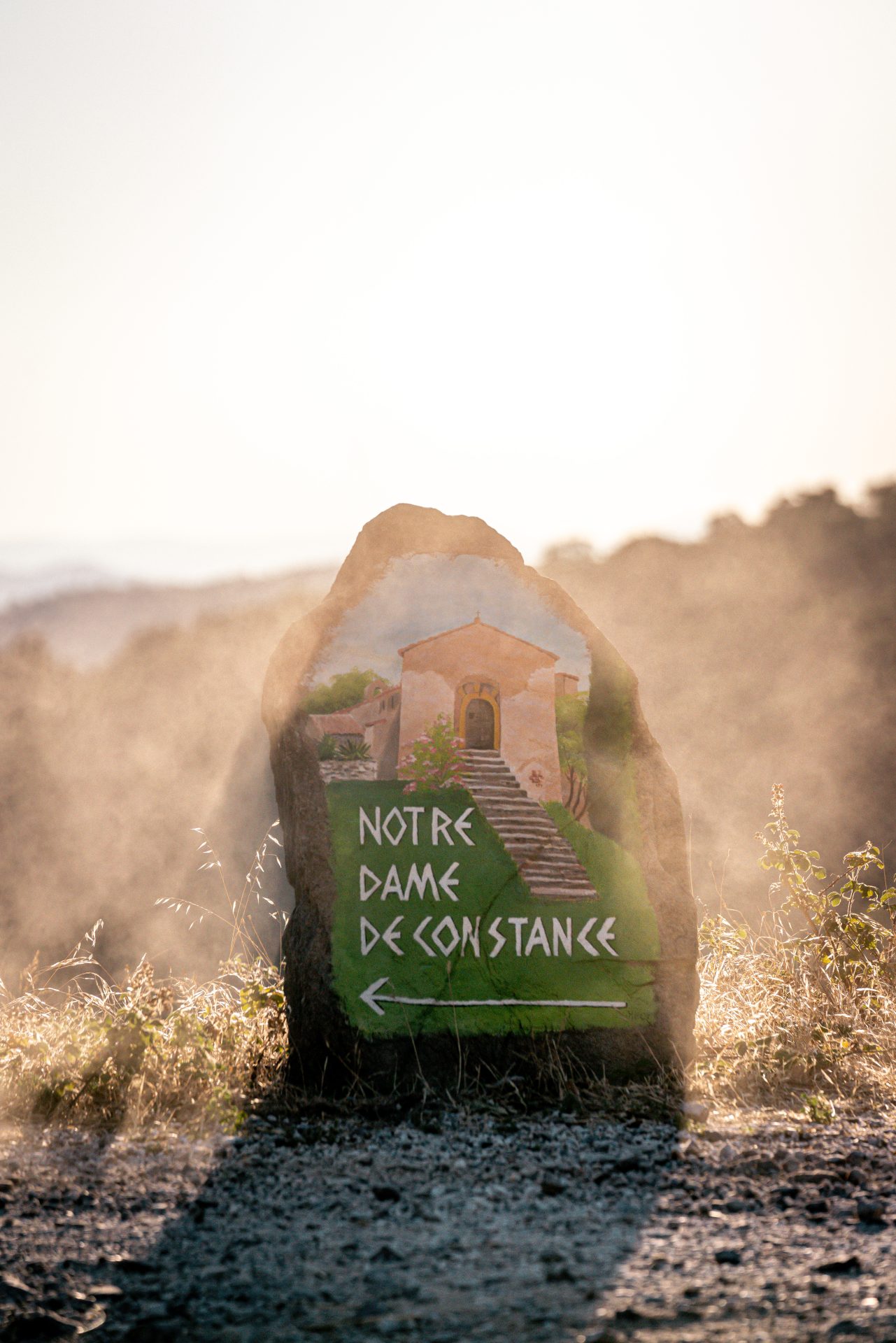
As well as hiking and sightseeing, the Massif des Maures offers a wide range of activities. Excursions to the islands of Hyères, cycling through the vineyards of the wine estates, or strolling through the lanes of the Domaine du Rayol.


